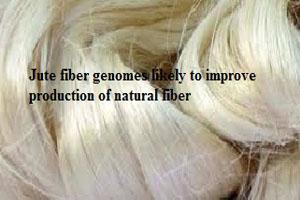
Jute fiber genomes likely to improve production of natural fiber
YarnsandFibers News Bureau 2017-02-23 00:00:00 – HawaiiJute, known as the golden fiber, is the world’s second most important natural fiber after cotton, due to its eco-friendly nature, affordability and versatility. The demand for jute fiber as biodegradable alternatives to synthetic materials is sought for a range of purposes which is increasing worldwide.
Researchers of University of HawaiÊ»i at MÄnoa based in the Advanced Studies in Genomics, Proteomics and Bioinformatics (ASGPB) were part of a Bangladesh-led effort that sequenced and analyzed the genomes of two species of jute, a fiber crop primarily grown in India and Bangladesh.
The project was initiated by the late Professor Maqsudul Alam of the Department of Microbiology, and garnered the support of Bangladesh’s prime minister and agriculture minister.
Researchers in the Basic and Applied Research on Jute Project in the Bangladesh Jute Research Institute are functionally characterizing the genomes and working to develop new jute varieties that will also enhance productivity in the industry.
The >400 Mbp genome sequences of both cultivated species, Corchorus olitorius and Corchorus capsularis, will be used in work to improve the plants’ traits, such as fiber quality, yield, disease resistance and salinity tolerance.
Gene expression analysis has provided insight into the molecular basis of fiber formation. Comparison of the genomes is helping identify the genes that control morphological and physiological differences between the two species.
Market Intelligence
Ask for free sample Report

experience
Customer Base
dedicated team
Countries Served Worldwide









